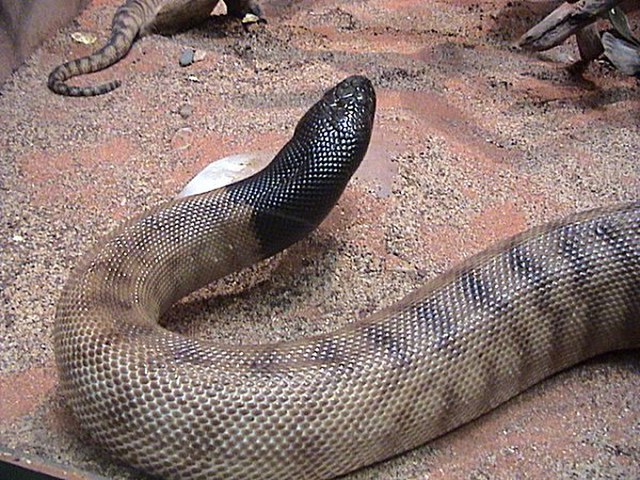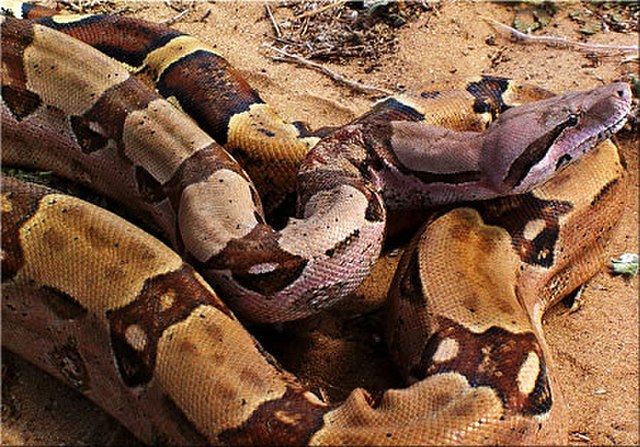The Pythonidae, commonly known as pythons, are a family of nonvenomous snakes found in Africa, Asia, and Australia. Among its members are some of the largest snakes in the world. Ten genera and 39 species are currently recognized. Being naturally non-venomous, pythons must constrict their prey to suffocate it prior to consumption. Pythons will typically strike at and bite their prey of choice to gain hold of it; they then must use physical strength to constrict their prey, by coiling their muscular bodies around the animal, effectively suffocating it before swallowing whole. This is in stark contrast to venomous snakes such as the rattlesnake, for example, which delivers a swift, venomous bite but releases, waiting as the prey succumbs to envenomation before being consumed. Collectively, the pythons are well-documented and -studied as constrictors, much like other non-venomous snakes, including the boas and even kingsnakes of the New World.
Pythonidae
Indian python (Python molurus)
Black-headed python (Aspidites melanocephalus)
The Boidae, commonly known as boas or boids, are a family of nonvenomous snakes primarily found in the Americas, as well as Africa, Europe, Asia, and some Pacific islands. Boas include some of the world's largest snakes, with the green anaconda of South America being the heaviest and second-longest snake known; in general, adults are medium to large in size, with females usually larger than the males. Six subfamilies comprising 15 genera and 54 species are currently recognized.
Boidae
Cloaca region of a Boa constrictor with spurs (rudimentary hindlegs)
A fossil of Boavus idelmani, an extinct species of boa
Boa type species; the boa constrictor (B. constrictor)







